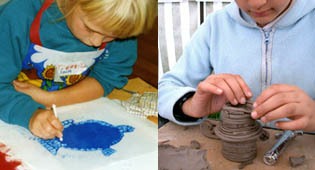











growing concerns
Who else thinks like this?
Neil MacGregor -
'History of the world in 100 objects' (publ. 2011) BBC Radio 4 series / book
Olduvai Stone Chopping Tool -
MacGregor describes the story of two million years of our development through a hundred objects in the British Museum:
"Can we be human without objects?
The invention of the first tools is one of the most important moments in human history. Making, using and sharing things played a key role in developing human behaviour. The ability to make tools allowed humans to adapt to new environments and out-
Swimming Reindeer Mammoth Tusk Sculpture -
Descibing the amazing creation of a sculptural piece which has no practical use:
"The two reindeer in this sculpture swim closely, one behind the other and in positioning them the sculptor has brilliantly exploited the tapering shape of the mammoth tusk… It’s a superbly observed piece -
We know that this detailed naturalism was only one of the styles that Ice Age artists had at their disposal. In the British Museum there is another sculpture found in that same cave at Montastruc. By a happy symmetry, that may not be a coincidence: where our reindeer are carved on mammoth tusk, the other sculpture is of a mammoth carved on a reindeer antler. But the mammoth, although instantly recognisable is drawn in quite a different way -
It is an appreciation not just of the animal world -
Why would you go to such trouble to make an object with no practical purpose? Dr Rowan Williams, the Archbishop of Canterbury, sees deep meaning in all this:
"You can feel that somebody’s making this who was projecting themselves with huge imaginative generosity into the world around, and saw and felt in their bones that rhythm. In the art of this period you see human beings trying to enter fully into the flow of life, so that they become part of the whole process of animal life that’s going on around them, in a way which isn’t just about managing the animal world, or guaranteeing the success in hunting. I think it’s more than that. It’s really a desire to get inside and almost to be at home in the world at a deeper level, and that’s actually a very religious impulse…
We sometimes tend to identify religion with not being at home in the world, as if the real stuff were elsewhere in Heaven; and yet if you look at religious origins, at a lot of mainstream themes in the great world religions, it’s the other way round -
resource link > Niel MacGregor: History of the world in 100 objects
what do we mean -
• there is special knowledge and understanding to be gained by making things
• childhood plays a vital part in this innovative process
a historical perspective
• observation, trial and error
• origins of maths
• patterns and geometry
facing the future
growing concerns
• Neil MacGregor
• Sherry Turkle
• Seymour Papert